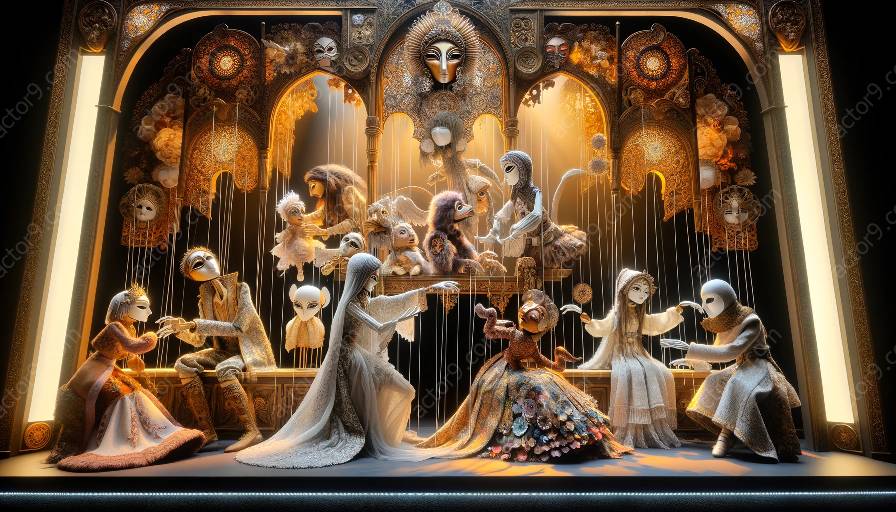Improvisation plays a crucial role in shaping the use of voice and sound in puppetry and mask performances, intertwining with the broader concept of improvisation in theatre. This article delves into the intricate connection between improvisation, puppetry, and mask work, exploring how spontaneity and creative expression elevate the use of voice and sound within these art forms.
Understanding Improvisation in Puppetry and Mask Work
Puppetry and mask performances are inherently reliant on the manipulation of inanimate objects and the use of non-verbal communication to convey meaning. However, the introduction of improvisation introduces a dynamic element that enriches the overall experience for both performers and audiences.
Embracing Spontaneity in Puppetry
When puppeteers engage in improvisation, they are granted the freedom to infuse their characters with unexpected gestures, vocalizations, and emotional depth. This spontaneity breathes life into the puppets, allowing them to respond and react in real-time, fostering a sense of authenticity and connection with the audience.
Exploring Vocal Variation and Expressiveness
The use of voice in puppetry is often overlooked, but improvisation provides an opportunity to explore a diverse range of vocal styles, tones, and inflections that can imbue the characters with distinct personalities. By spontaneously adapting their vocal delivery, puppeteers can create compelling performances that captivate and engage audiences on a deeper level.
Enhancing Soundscapes in Mask Performances
Mask work, with its emphasis on physical expression and symbolism, benefits greatly from improvised soundscapes. The ability to produce vocal and non-vocal sounds on the spot allows performers to amplify the dramatic impact of their movements and gestures, heightening the overall sensory experience for spectators.
Integration with Improvisation in Theatre
Improvisation in puppetry and mask work is intricately linked with the broader practice of improvisation in theatre. Through exploration of voice and sound, puppeteers and mask performers contribute to the collective art of spontaneous creation, enriching the theatrical landscape with inventive expressions and storytelling.
Collaborative Storytelling through Voice and Sound
Within the theatrical realm, the integration of improvised voice and sound in puppetry and mask performances fosters collaborative storytelling. As performers respond to each other's cues and interactions, they co-create narratives that unfold in the moment, generating an organic and immersive experience for both themselves and their audience.
Emotional Resonance and Authentic Interactions
Improvisation enables performers to tap into genuine emotions and spur-of-the-moment interactions, infusing their characters with a sense of immediacy and authenticity. The use of voice and sound becomes a conduit for conveying raw emotions and establishing compelling connections with the audience, amplifying the impact of the performance.
Enriching Theatrical Innovation and Creativity
By embracing improvisation, puppetry and mask performances contribute to the ongoing evolution of theatrical innovation, challenging traditional norms and pushing the boundaries of creative expression. Through the fluidity of voice and sound, artists continuously explore new avenues of artistic discovery, redefining the possibilities of storytelling within the realm of improvisational theatre.




























